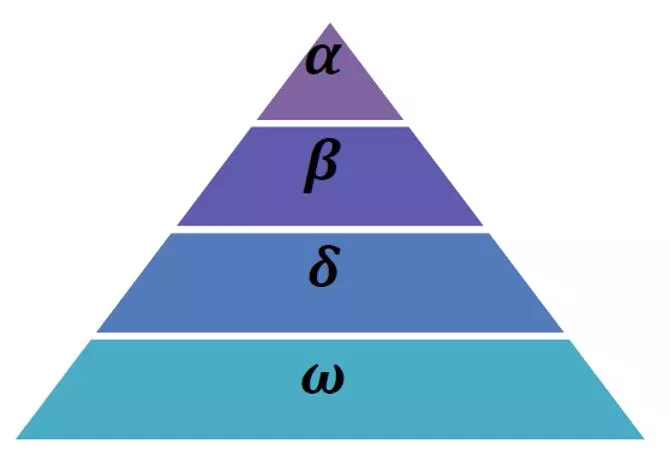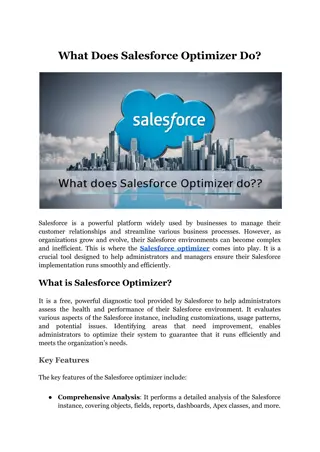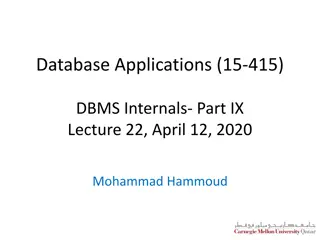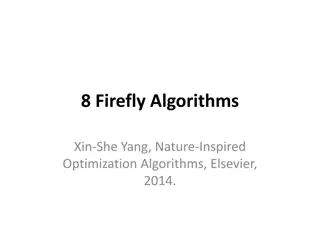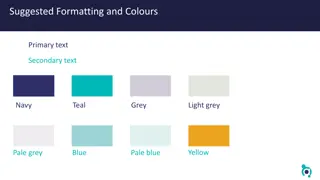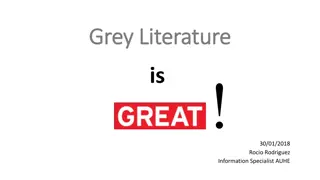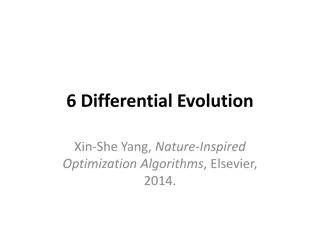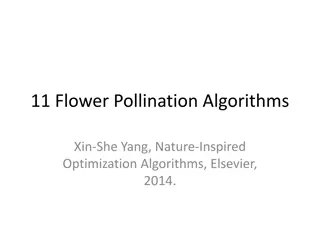Grey Wolf Optimizer: A Nature-Inspired Optimization Algorithm
The Grey Wolf Optimizer algorithm is based on the social hierarchy of grey wolves in the wild. Inspired by the pack behavior of grey wolves, this algorithm utilizes alpha, beta, and delta solutions to guide the optimization process. The hunting phases of tracking, pursuing, and attacking prey mimic the natural hunting behavior of grey wolves. By balancing exploration and exploitation, the algorithm aims to find the fittest solution efficiently.
Download Presentation

Please find below an Image/Link to download the presentation.
The content on the website is provided AS IS for your information and personal use only. It may not be sold, licensed, or shared on other websites without obtaining consent from the author. Download presentation by click this link. If you encounter any issues during the download, it is possible that the publisher has removed the file from their server.
E N D
Presentation Transcript
Grey Wolf Optimizer Seyedali Mirjalili, Seyed Mohammad Mirjalili and Andrew Lewis Advances in Engineering Software, Volume 69, March 2014, Pages 46-61
3.1. Inspiration Grey wolves mostly prefer to live in a pack. The group size is 5-12 on average. O Grey wolves have a very strict social dominant hierarchy
The leaders are a male and a female, called alphas The second level in the hierarchy of grey wolves is beta The lowest ranking grey wolf is omega. If a wolf is not an alpha, beta, or omega, he/she is called subordinate (or delta in some references).
The main phases of grey wolf hunting Tracking, chasing, and approaching the prey Pursuing, encircling, and harassing the prey until it stops moving Attack towards the prey
3.2. Mathematical model and algorithm
3.2.1. Social hierarchy we consider the fittest solution as the alpha ( ). Consequently, the second and third best solutions are named beta ( ) and delta ( ) respectively. The rest of the candidate solutions are assumed to be omega ( ) In the GWO algorithm the hunting (optimization) is guided by alpha, beta, and delta. The omega wolves follow these three wolves.
3.2.5. Search for prey (exploration) The parameter a is decreased from 2 to 0 in order to emphasize exploration and exploitation, respectively. Candidate solutions tend to diverge from the prey when |A|>1 and converge towards the prey when |A|<1.
The proposed social hierarchy assists GWO to save the best solutions obtained so far over the course of iteration The proposed encircling mechanism defines a circle- shaped neighborhood around the solutions which can be extended to higher dimensions as a hyper-sphere The random parameters A and C assist candidate solutions to have hyper-spheres with different random radii The proposed hunting method allows candidate solutions to locate the probable position of the prey
Exploration and exploitation are guaranteed by the adaptive values of a and A The adaptive values of parameters a and A allow GWO to smoothly transition between exploration and exploitation With decreasing A, half of the iterations are devoted to exploration (|A| 1) and the other half are dedicated to exploitation (|A|<1) The GWO has only two main parameters to be adjusted (a and C)



